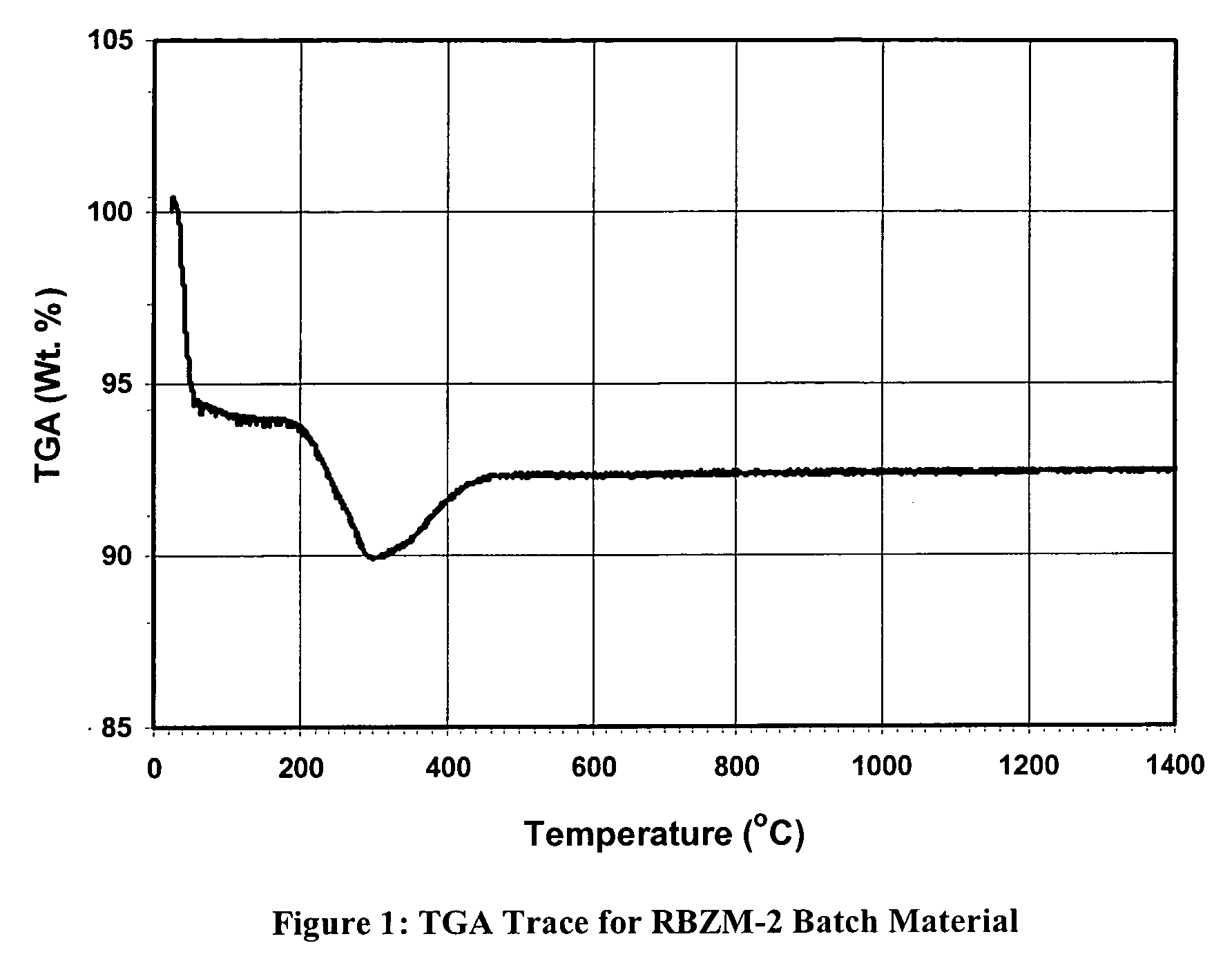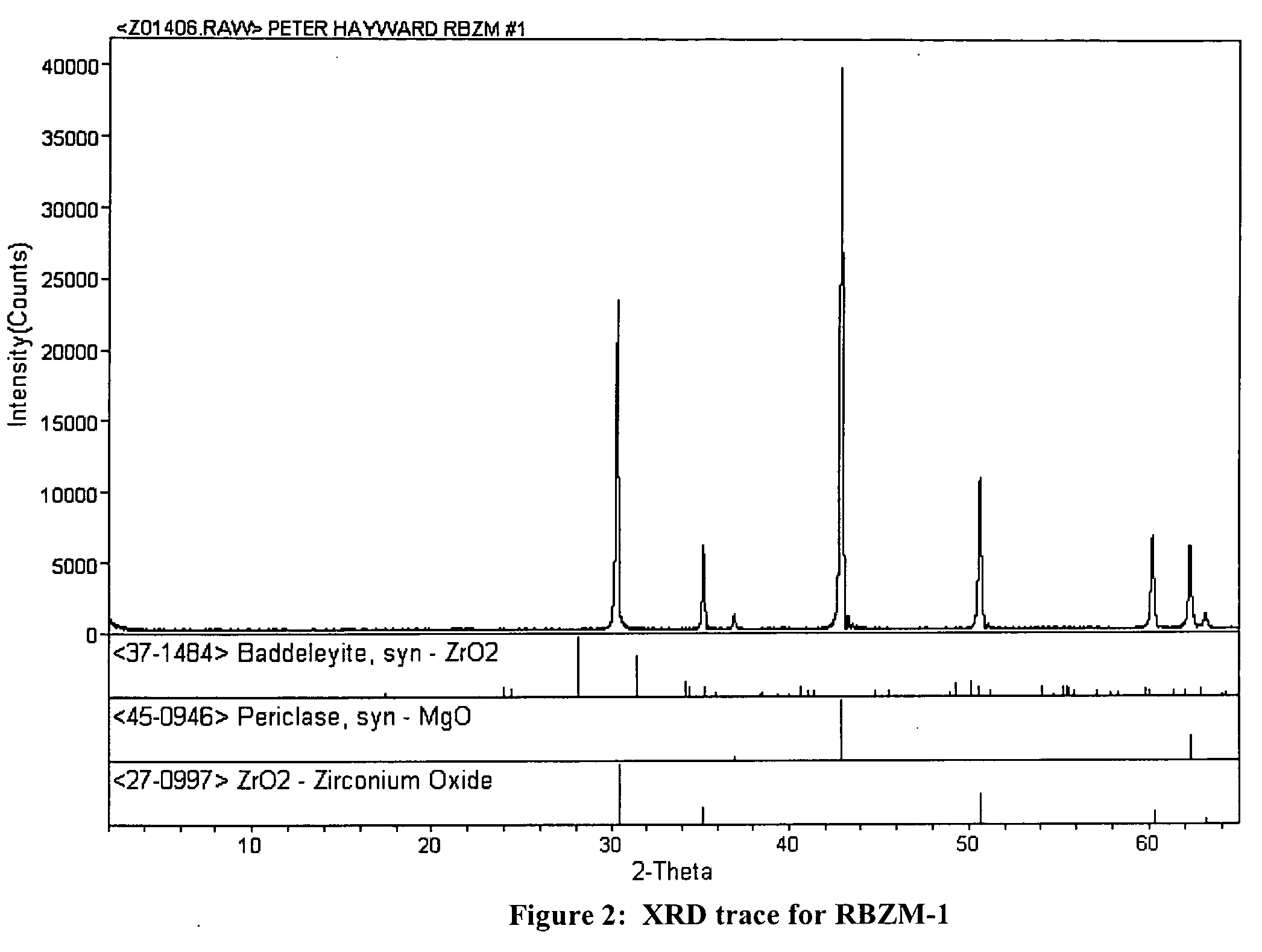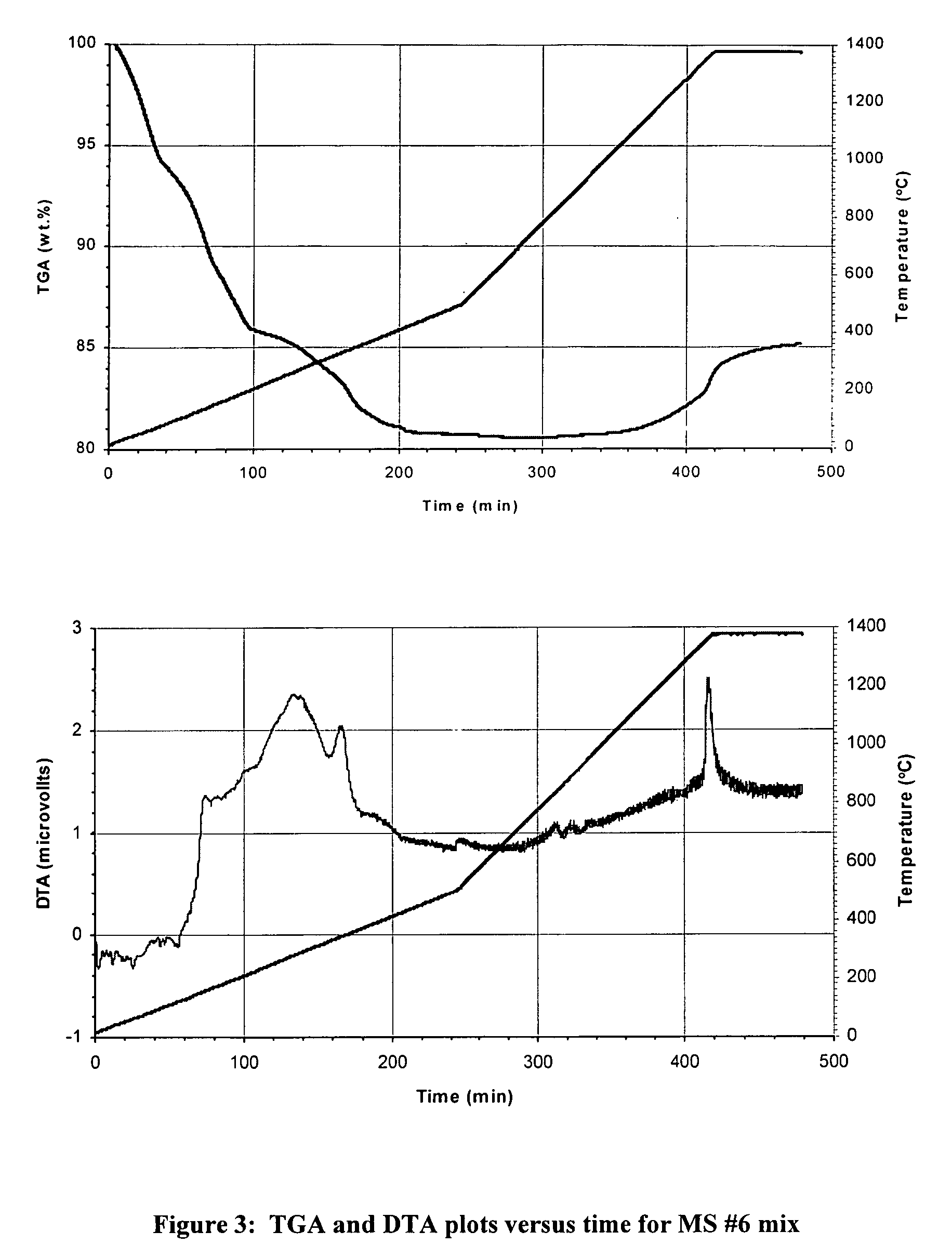Reaction-bonded porous magnesia body
a porous, reaction-bonded technology, applied in the direction of ceramicware, filtration separation, separation process, etc., can solve the problems of difficult sintering, large volume change, and relative poor chemical durability and strength, and achieve the effect of controlling the volume change during sintering
- Summary
- Abstract
- Description
- Claims
- Application Information
AI Technical Summary
Benefits of technology
Problems solved by technology
Method used
Image
Examples
example 1
[0043] Pressed pellets containing zirconium, zirconia, and magnesia grains were fired in air to produce zirconia-bonded magnesia pellets (RBZM), which were characterized by various means. Table 4 shows the batch compositions of three formulations examined, using progressively increasing Zr metal contents.
[0044] Mixing, Pressing and Firing Procedures: In all cases, the inorganic powders were briefly milled with dry alumina media to break up agglomerates. After removal of the media and blending in of the methylcellulose powder, the solids were thoroughly mixed with a solution of stearic acid in warm ethanol. Finally, a mixed solution of the ethylene glycol, PVA solution and pure water components was added and blended in. The batch was then sealed in polyethylene and stored overnight to allow hydration of the methylcellulose powder.
[0045] A series of eight ˜4-g pellets of each mix were pressed between 2.5-cm filter paper disks (to prevent sticking) in a 1.0-inch diameter hardened ste...
example 2
[0053] Pressed pellets of zirconium, zirconia, and magnesia grains, together with sintering aids, were fired to produce zirconia-bonded magnesia pellets (RBZM), which were characterized by different means. Table 6 shows the batch compositions of two formulations examined, based on the RBZM-1 composition in Example 1, but with 1.0 wt. % (inorganic solid basis) addition of fumed TiO2 or CeO2 to promote sintering and increase pellet strength. The RBZM-1 composition is also included for comparison.
[0054] The dopant additions were made as follows.
[0055] RBZM-11: 0.8 g NanoTek titania was dispersed in 25 mL water containing 0.2 g Darvan C (dispersing agent) using a magnetic stirrer. While still stirring, the remaining inorganic components were added and stirred to form a sloppy paste, which was then dried overnight at 100° C. The dried powders were briefly dry-milled with alumina media to break up agglomerates. After removal of the media and blending in of the methylcellulose powder, th...
example 3
[0064] Pressed pellets containing a mixture of coarse and fine magnesia, together with silicon metal powder were fired in air to produce forsterite-bonded magnesia pellets. Table 8 shows the batch compositions of four such formulations (designated MS).
[0065] Composition MS-6 contained stoichiometric amounts of fine MgO and Si metal required for formation of pure forsterite (Mg2SiO4) after Si oxidation and reaction bonding. The target volume ratio of phases in the fired pellets was 70% coarse MgO, 30% forsterite.
[0066] Composition MS-7 was derived by increasing the Si content in MS-6 by 25%. This increase was made to investigate whether any significant property changes were produced from reaction of the additional oxidized Si with the coarse MgO component. In this case, the target volume ratio of phases in the fired pellets was ˜64% coarse MgO, ˜36% forsterite.
TABLE 8Wt. % Batch Compositions of MS FormulationsComponentMS-6MS-7MS-8MS-9Coarse magnesia (Cerac M-1138,61.5961.5961.596...
PUM
| Property | Measurement | Unit |
|---|---|---|
| porosity | aaaaa | aaaaa |
| mean pore size | aaaaa | aaaaa |
| mean particle size | aaaaa | aaaaa |
Abstract
Description
Claims
Application Information
 Login to View More
Login to View More - R&D
- Intellectual Property
- Life Sciences
- Materials
- Tech Scout
- Unparalleled Data Quality
- Higher Quality Content
- 60% Fewer Hallucinations
Browse by: Latest US Patents, China's latest patents, Technical Efficacy Thesaurus, Application Domain, Technology Topic, Popular Technical Reports.
© 2025 PatSnap. All rights reserved.Legal|Privacy policy|Modern Slavery Act Transparency Statement|Sitemap|About US| Contact US: help@patsnap.com



